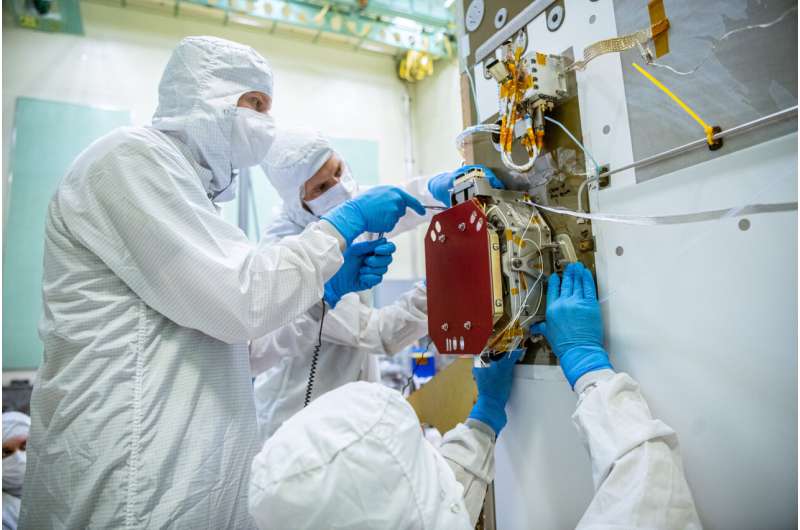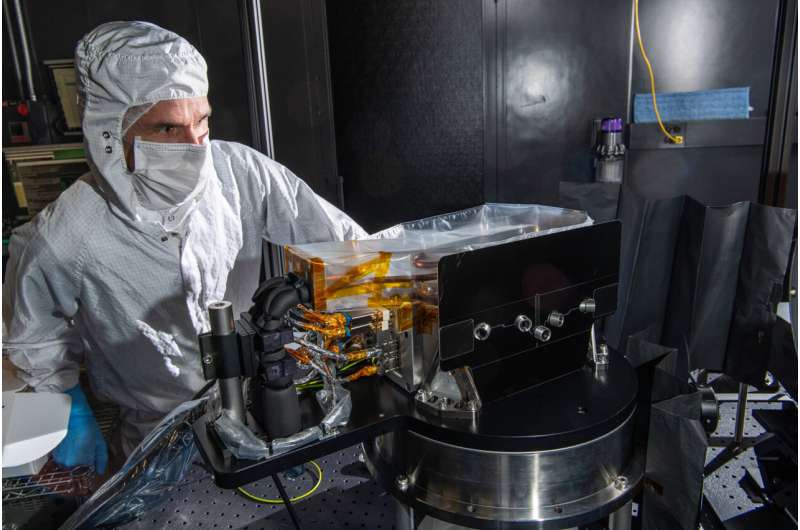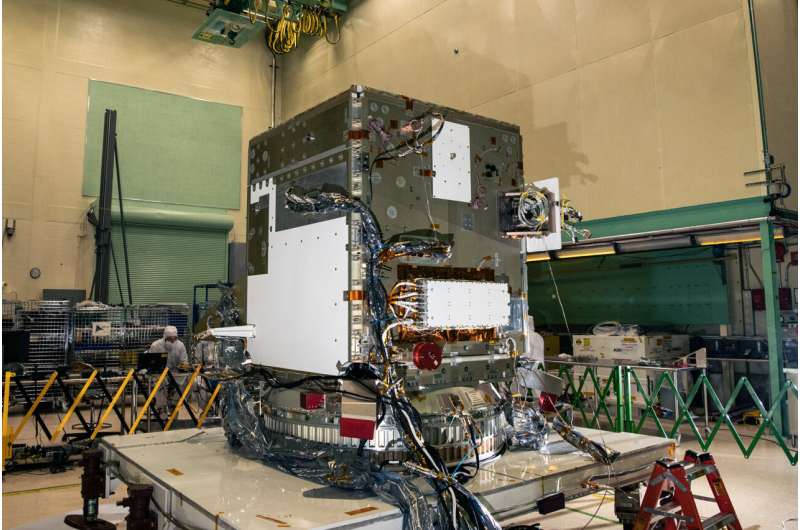Aerosol instrument SPEXone mounted on NASA's climate satellite

Over the past few weeks, a group of engineers from SRON Netherlands Institute for Space Research, Airbus Netherlands and NASA has been working on installing the Dutch aerosol instrument SPEXone on NASA's PACE satellite. PACE will conduct measurements on oceans and aerosols to study the influence of particulates on the climate. It is scheduled for launch in 2024. On June 23, the last screw is tightened, which officially completes the integration.
At NASA's Goddard Space Flight Center in Maryland, the climate satellite PACE was waiting on her first measurement instrument when on June 8, a group of Dutch and American engineers walked into the cleanroom. SPEXone, together with the instruments HARP2 and OCI, will provide the spacecraft with a razor sharp view of the Earth to measure the color of its oceans and map the properties of aerosols. The Dutch SPEXone instrument—developed by SRON and Airbus Netherlands with support from TNO—is responsible for the aerosol measurements together with HARP2 and is now the first instrument to be integrated on the satellite.
Aerosols are small dust particles in the air, such as soot, ash and desert dust. They have a major influence on air pollution and climate change, but their precise role is insufficiently known. That is why scenarios for global warming up to the year 2100 vary by approximately 3 degrees Celsius. Most aerosols reflect light and have a cooling effect on the Earth, but they can also have a warming effect due to absorption. SPEXone will map out the properties of aerosols, such as size, shape, composition and absorbing/reflecting power. It also helps the OCI instrument to measure the color of the oceans and thus monitor the amount of plankton. This is because a correction is necessary due to aerosol scattering.

In February 2021, SPEXone was finalized in The Netherlands, in the presence of the Dutch science minister, and was transported to Goddard. Since then, the Dutch team has conducted several tests to verify that the instrument had arrived in one piece and survived months of storage. "But this is the most exciting moment," says SRON engineer Alexander Eigenraam just before his journey to the U.S. "The alignment needs to be spot on. We especially have to watch out that it is not slightly twisted. We mount SPEXone on a vertical side of the satellite, so that makes it extra difficult. And we need to switch to NASA's test systems and electronics. This is necessary because SPEXone is now linked to the satellite, and no outside computers are allowed to connect to it."

The Dutch SPEXone instrument is a candidate to also become part of the European CO2M satellite, which will map the concentrations of CO2 in the Earth's atmosphere. Aerosols affect CO2 measurements, so an aerosol instrument is needed for corrections.
Provided by SRON Netherlands Institute for Space Research



















